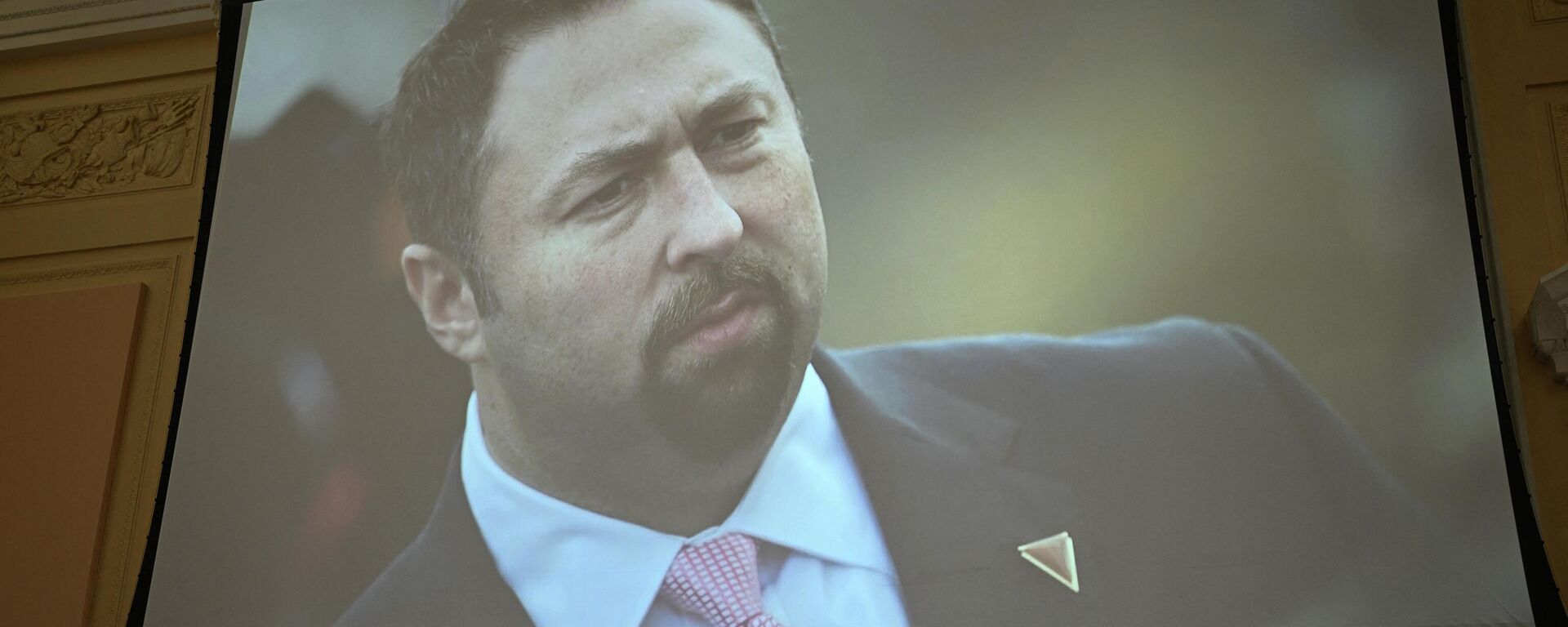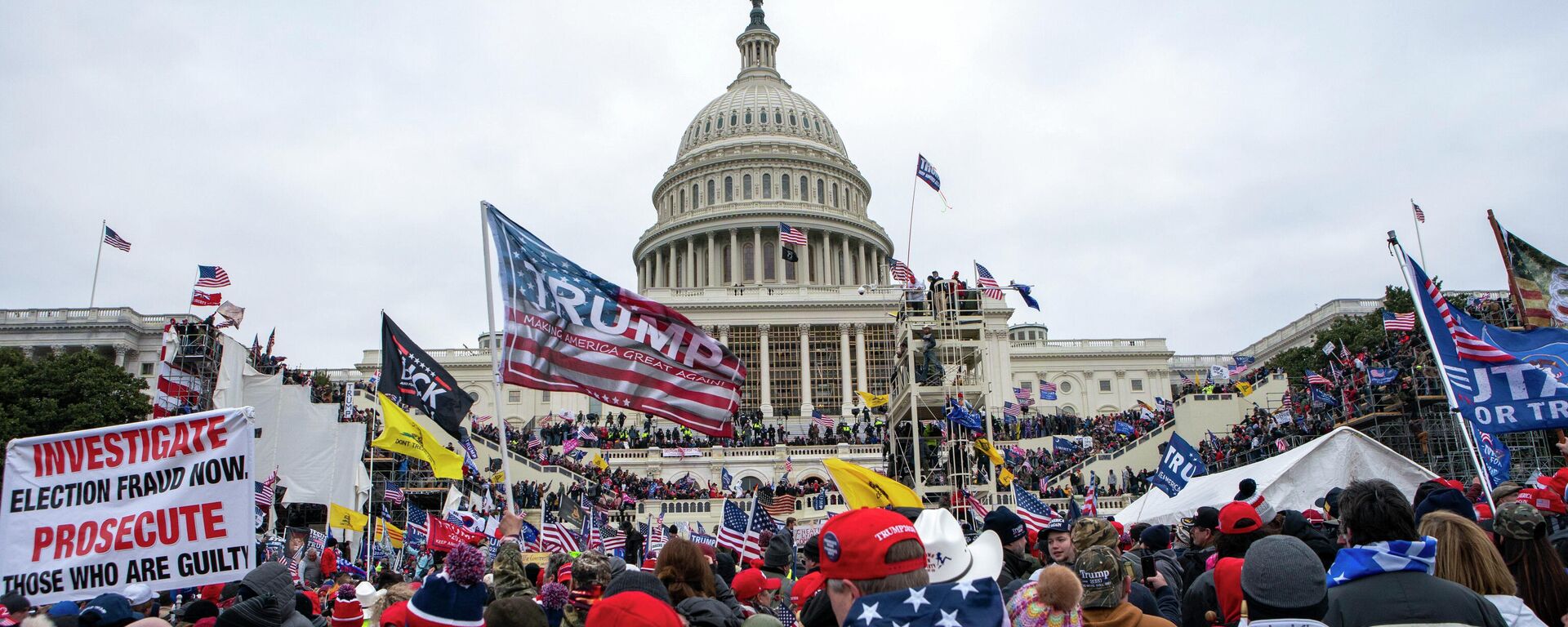https://sputnikglobe.com/20220610/january-6-committee-leaks-trumps-alleged-seven-part-plan-to-overturn-election-stay-in-power-1096200952.html
January 6 Committee Leaks Trump’s Alleged Seven-Part Plan to Overturn Election, Stay in Power
January 6 Committee Leaks Trump’s Alleged Seven-Part Plan to Overturn Election, Stay in Power
Sputnik International
The House Democrat-dominated January 6 committee, which includes two Never-Trump Republicans - Liz Cheney and Adam Kinzinger, held a prime time televised... 10.06.2022, Sputnik International
2022-06-10T18:46+0000
2022-06-10T18:46+0000
2022-06-10T19:03+0000
donald trump
us house select committee
https://cdn1.img.sputnikglobe.com/img/07e5/08/16/1083687044_0:320:3072:2048_1920x0_80_0_0_938a73714cd795af02da2ef6fd7e9d71.jpg
The House Select Committee investigating the January 6 attack on the Capitol has leaked a summary of what neoconservative Republican Liz Cheney referred to as President Trump’s “seven-part plan” to remain in power.“President Donald Trump’s intention was to remain president of the United States despite the lawful outcome of the 2020 election and in violation of his constitutional obligation to relinquish power,” Cheney said in her opening statement Thursday. “Over multiple months, Donald Trump oversaw and coordinated a sophisticated seven-part plan to overturn the presidential election and prevent the transfer of presidential power. In our hearings, you will see evidence of each element of this plan,” Cheney said in her opening statement.Cheney, daughter of former vice president Dick Cheney, provided no further information regarding this plan in Thursday's hearing.However, a House Select Committee source leaked a summary of the alleged plan to CNN.Point number three reportedly included “corruptly” pressuring Vice President Mike Pence “to refuse to count certified electoral votes,” in potential violation of the US constitution, and four: “corruptly” pressuring state election officials and legislators to change election results in their constituencies.“President Trump’s legal team and other Trump associates” also “instructed Republicans” in some states to “create false electoral slates” (i.e. electors of the electoral college votes which determine the outcome of national elections) “and transmit those slates to Congress and the National Archives,” the summary alleged.Thursday’s hearing did not contain any additional information about these points, with Cheney instead focusing on the events of January 6, 2021 and characterizing it as “a brazen attempt…to overthrow the government.” The hearing was only the first of eight planned public events.None of the individual components of the so-called “sophisticated seven-part plan” are new, and each has been discussed at length by the House Select Committee during its nearly year-long investigation of the Capitol riots.Regarding point number one, for example, Trump has stated ad nauseam and continues to claim that the 2020 election was “stolen” from him using a combination of false mail-in ballots and rigged voting machines. He first brought up the issue of mail-in ballots as a potential source of fraud back in the summer of 2020, months before election day, and warned at the time that he might not recognize the results if he suspected fraud.Trump’s feuds with Pence and then-attorney general Bill Barr are no secret either, with the president repeatedly taking to Twitter and traditional media to admonish Pence and to call Barr names over his hesitation to investigate the fraud claims.Trump has long denied being responsible for the violence at the Capitol, however, and reiterated Friday that the “so-called ‘Rush on the Capitol’ was not caused by” him, but “by a Rigged and Stolen Election!”The former president’s “fraud” claims have not been aired in any US court, with the Supreme Court throwing out a motion by the State of Texas to investigate the election-related allegations in half-a-dozen states back in December 2020.Trump has dismissed the House Select Committee’s investigation into January 6, accusing lawmakers of a “witch hunt” against him aimed at permanently barring him from public office.
https://sputnikglobe.com/20220610/trumps-ex-adviser-slams-liz-cheney-over-handling-of-his-testimony-1096193258.html
https://sputnikglobe.com/20220610/tucker-carlson-slams-january-6-show-trial-reveals-what-may-push-americans-to-real-insurrection-1096194997.html
https://sputnikglobe.com/20220610/attempted-coup--bullsht-fraud-claims-key-takeaways-from-first-jan-6-hearing-1096176309.html
Sputnik International
feedback@sputniknews.com
+74956456601
MIA „Rossiya Segodnya“
2022
News
en_EN
Sputnik International
feedback@sputniknews.com
+74956456601
MIA „Rossiya Segodnya“
Sputnik International
feedback@sputniknews.com
+74956456601
MIA „Rossiya Segodnya“
donald trump, us house select committee
donald trump, us house select committee
January 6 Committee Leaks Trump’s Alleged Seven-Part Plan to Overturn Election, Stay in Power
18:46 GMT 10.06.2022 (Updated: 19:03 GMT 10.06.2022) The House Democrat-dominated January 6 committee, which includes two Never-Trump Republicans - Liz Cheney and Adam Kinzinger, held a prime time televised hearing on Thursday to make the case to Americans that the Capitol riots were part of a sophisticated plot by the sitting president to illegally overturn the November 2020 election.
The House Select Committee investigating the January 6 attack on the Capitol has leaked a summary of what neoconservative Republican Liz Cheney referred to as President Trump’s “seven-part plan” to remain in power.
“President Donald Trump’s intention was to remain president of the United States despite the lawful outcome of the 2020 election and in violation of his constitutional obligation to relinquish power,” Cheney said in her opening statement Thursday. “Over multiple months, Donald Trump oversaw and coordinated a sophisticated seven-part plan to overturn the presidential election and prevent the transfer of presidential power. In our hearings, you will see evidence of each element of this plan,” Cheney said in her
opening statement.
Cheney, daughter of former vice president Dick Cheney, provided no further information regarding this plan in Thursday's hearing.
However, a House Select Committee source leaked a
summary of the alleged plan to CNN.
Among its points are number one: “a massive effort” by Trump “to spread false and fraudulent information to the American public claiming the 2020 election was stolen from him,” and number two: a plan to “corruptly” replace the acting attorney general to get the Department of Justice to support his election-related allegations.
Point number three reportedly included “corruptly” pressuring Vice President Mike Pence “to refuse to count certified electoral votes,” in potential violation of the US constitution, and four: “corruptly” pressuring state election officials and legislators to change election results in their constituencies.
“President Trump’s legal team and other Trump associates” also “instructed Republicans” in some states to “create false electoral slates” (i.e. electors of the electoral college votes which determine the outcome of national elections) “and transmit those slates to Congress and the National Archives,” the summary alleged.
Finally, the sixth and seventh points accused Trump himself of ‘summoning and assembling’ a “violent mob” in the US capital and directing them to march on the Capitol, and ignoring “multiple pleas for assistance,” and failing to take immediate action to stop the unrest.
Thursday’s hearing did not contain any additional information about these points, with Cheney
instead focusing on the events of January 6, 2021 and characterizing it as “a brazen attempt…to overthrow the government.” The hearing was only the first of eight planned public events.
None of the individual components of the so-called “sophisticated seven-part plan” are new, and each has been discussed at length by the House Select Committee during its nearly year-long investigation of the Capitol riots.
Regarding point number one, for example, Trump has stated ad nauseam and continues to claim that the 2020 election was “stolen” from him using a combination of false mail-in ballots and rigged voting machines. He first brought up the issue of mail-in ballots as a potential source of fraud back
in the summer of 2020, months before election day, and warned at the time that he might not recognize the results if he suspected fraud.
Trump’s
feuds with Pence and then-attorney general Bill Barr are no secret either, with the president repeatedly taking to Twitter and traditional media to admonish Pence and to
call Barr names over his hesitation to investigate the fraud claims.
In a series of posts on Truth Social on Friday, Trump again railed against Barr, calling him “stupid,” a “coward,” and a “weak and frightened attorney general who was always being ‘played’ and threatened by the Democrats and…scared stiff of being impeached.”
Trump has long denied being responsible for the violence at the Capitol, however, and reiterated Friday that the “so-called ‘Rush on the Capitol’ was not caused by” him, but “by a Rigged and Stolen Election!”
The former president’s “fraud” claims have not been aired in any US court, with the Supreme Court throwing out a motion by the State of Texas to investigate the election-related allegations in half-a-dozen states back
in December 2020.Trump has dismissed the House Select Committee’s investigation into January 6, accusing lawmakers of a “witch hunt” against him aimed at permanently barring him from public office.




